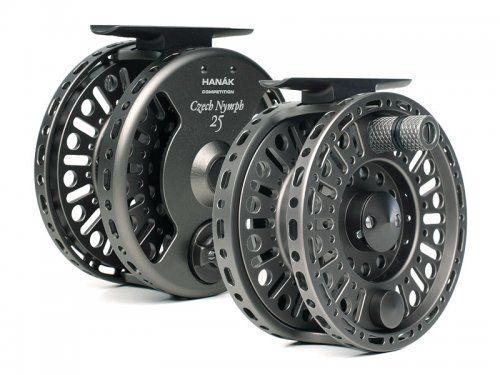This brief set of paragraphs is intended to help you to choose the fly-fishing reel.
Introduction:
This brief set of paragraphs is intended to help you to choose the fly-fishing reel which is most suited to your purpose. Clearly, where there is a group of different elements there may be conflicting forces. For example, you may wish to have a reel with high capacity - but wish it to be very lightweight (these two elements may be difficult to reconcile - for obvious reasons)
1. Capacity:
Some modern reels are designed with a 'large arbor' .... Meaning that the central spindle of the reel has a large diameter. This is intended to ensure that the fly-line is less-tightly wound around the centre (reducing the line's coiling 'memory) and also allowing rapid line retrieval due to each rotation gathering more of the line.
The purchaser should select a reel which has sufficient capacity for the intended fly-line plus an appropriate quantity of (thinner) backing line. This choice is influenced by the species and location of the intended use of the outfit (for instance: small brown trout and less likely to require large quantities of backing line, whereas a large salmon may take 100 - 200 metres of line in a single run.
2. Weight:
The weight of modern fly-reels varies significantly. Lightweight alloy reels are popular - although there is sometimes a case to select a heavier reel which will better balance the weight of rod and line - so that the fulcrum sits within the handle of the rod when casting.
3. Drag System:
Most modern reels have a mechanism which offers resistance to rotation - called the 'drag'. This is intended to reduce over-runs and provides a facility to place stain against a fish when it 'runs'. Some of the more-expensive reels have highly developed drag mechanisms - whist cheaper ones may have a simpler system (sometimes a small internal pawl which clicks as the reel turns). The choice sits in the required function - if you are likely to hook very large or very active species which need the control through the reel, you will have to buy an advanced drag-system reel, whereas, if you are going to fish for small fish then the reel may become a simple receptacle for your line rather than a mechanical brake.
4. Inter-Changeable spools?
Many modern reels are either supplied with, or offer the opportunity to acquire extra interchangeable spools. This facility is excellent when different lines are to be used (for example: floating, intermediate or differing sink-rate fly-lines). The ability to remove and replace the central spool means that you may change lines and therefore tactics without having to change the whole reel.
5. Left/Right Hand Wind
Most reels offer the ability to change from left to right hand operation (this should not be a problem in reel selection… but confirm before purchasing).
6. Price
By and large, purchaser will 'get-what-they-pay-for' . Expensive reels generally have facilities and design which provide enhanced function or longevity, whereas, inexpensive reels may offer the fly-fisher easy use at an attractive price. However, it makes no sense to buy an expensive reel then damage it on rocky river banks ..... it may be better to buy a less-expensive one for that purpose and keep your best reel for less-demanding fishing.














